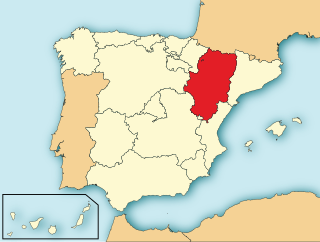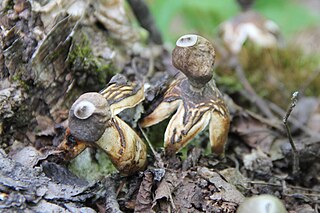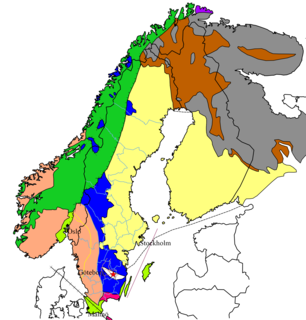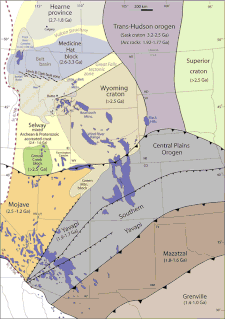Related Research Articles

The Proterozoic is a geological eon spanning the time interval from 2500 to 541 million years ago. It is the most recent part of the Precambrian "supereon." It is also the longest eon of the Earth's geologic time scale, and it is subdivided into three geologic eras : the Paleoproterozoic, Mesoproterozoic, and Neoproterozoic.

Acritarchs are organic microfossils, known from approximately 1800 million years ago to the present. The classification is a catch all term used to refer to any organic microfossils that cannot be assigned to other groups. Their diversity reflects major ecological events such as the appearance of predation and the Cambrian explosion.
In stratigraphy, paleontology, geology, and geobiology an erathem is the total stratigraphic unit deposited during a certain corresponding span of time during an era in the geologic timescale.

Psilocybe hispanica is a species of fungus in the family Hymenogastraceae. It produces small brown mushrooms with conical to convex caps up to 10 mm (0.4 in) in diameter and stems 16 to 25 mm long by 0.5 to 1 mm thick. Reported as new to science in 2000, it is only known from the Pyrenees mountain range in northern Spain and southwestern France, where it grows on horse dung in grass fields at elevations of 1,700 to 2,300 m. The mushroom contains the psychoactive compound psilocybin. The possible depiction of this species in the 6,000-year-old Selva Pascuala rock art suggests that it might have been used in ancient religious rituals—the oldest evidence of such usage in prehistoric Europe.

Pulveroboletus bembae is a species of fungus in the family Boletaceae that was first described in 2009. It is known only from the rainforest of northern Gabon, a region known for its high level of species diversity. Like all boletes, P. bembae has fleshy fruit bodies that form spores in tubes perpendicular to the ground on the underside of the cap. These yellowish tubes form a surface of pores, each about 1–2 mm in diameter. The brownish caps may reach up to 3.5 cm (1.4 in) wide, and rest atop pale brown stems up to 5.5 cm (2.2 in) long. The stems have a woolly, whitish yellow ring of tissue that is short-lived, and may be absent in older specimens. The spores of P. bembae are spindle- or fuse-shaped, and have rough surfaces—a detail observable when viewed with scanning electron microscopy. The fungus grows in a mycorrhizal relationship with Gilbertiodendron dewevrei, the dominant tree species of the Guineo-Congolian rainforest. Other similar Pulveroboletus species in the area include P. annulus and P. croceus, which may be differentiated from P. bembae by a combination of macro- and microscopic characteristics.

Geastrum quadrifidum, commonly known as the rayed earthstar or four-footed earthstar, is an inedible species of mushroom belonging to the genus Geastrum, or earthstar fungi. First described scientifically by Christian Hendrik Persoon in 1794, G. quadrifidum is a cosmopolitan—but not common—species of Europe, the Americas, Africa, Asia, and Australasia. The fungus is a saprobe, feeding off decomposing organic matter present in the soil and litter of coniferous forests.

Mycena clariviolacea is a mushroom in the family Mycenaceae. First reported as a new species in 2007, it is known only from Kanagawa, Japan, where it fruits on dead fallen twigs in forests dominated by oak and chinquapin trees. Distinctive features of this species are found in its medium-sized, dark violet fruit bodies, with caps up to 25 mm (0.98 in) in diameter and slender stems that are about 30 to 40 mm long. Microscopic characteristics include the amyloid spores, the club-shaped cheilocystidia that are covered with one or more, knob-like, apical protuberances, the absence of pleurocystidia, and the cylindrical, diverticulate caulocystidia.

Mycena fonticola is a species of fungus in the family Mycenaceae. First reported in 2007, it is known only from central Honshu, in Japan, where it grows on dead leaves and twigs in low-elevation forests dominated by oak trees. The fruit body of the fungus has a smooth, violet-brown cap up to 2.5 cm (1.0 in) in diameter, and a slender stem up to 10 cm (3.9 in) long. Distinguishing microscopic characteristics of the mushroom include the relatively large, distinctly amyloid spores, the smooth, spindle-shaped cheilocystidia, the absence of pleurocystidia, the diverticulate hyphae of the cap cuticle, and the absence of clamp connections.

Mycena fuscoaurantiaca is a species of mushroom in the family Mycenaceae. First reported as a new species in 2007, the diminutive mushroom is only found in Kanagawa, Japan, where it grows on dead fallen twigs in lowland forests dominated by hornbeam carpinus and Chinese evergreen oak trees. The mushroom has a brownish-orange conical cap that has grooves extending to the center, and reaches up to 11 mm (0.43 in) in diameter. Its slender stem is colored similarly to the cap, and long—up to 60 mm (2.4 in) tall. Microscopic characteristics include the weakly amyloid spores, the smooth, swollen cheilocystidia and pleurocystidia with long rounded tips, the diverticulate hyphae of the cap cuticle, and the absence of clamp connections.

Mycena lanuginosa is a species of mushroom in the family Mycenaceae. First collected in 2000 and reported as a new species in 2007, it is known only from lowland oak-dominated forests in central Honshu in Japan. The small mushroom is characterized by its grooved, grayish-brown to violet-brown cap up to 11 mm (0.43 in) in diameter, and the slender grayish-brown to reddish-brown stem covered with minute, fine, soft hairs. The mushroom produces amyloid spores. Microscopic distinguishing features include the smooth, spindle-shaped cheilocystidia and pleurocystidia and the diverticulate elements in the outer layer of the cap and the stem.

Mycena multiplicata is a species of mushroom in the family Mycenaceae. First described as a new species in 2007, the mushroom is known only from Kanagawa, Japan, where it grows on dead fallen twigs in lowland forests dominated by oak. The mushroom has a whitish cap that reaches up to 13 mm (0.51 in) in diameter atop a slender stem 15 to 20 mm long by 1 to 1.3 mm thick. On the underside of the cap are whitish, distantly spaced gills that are narrowly attached to the stem. Microscopic characteristics of the mushroom include the amyloid spores, the pear-shaped to broadly club-shaped cheilocystidia covered with a few to numerous, unevenly spaced, cylindrical protuberances, the lack of pleurocystidia, and the diverticulate hyphae in the outer layer of the cap and stem. The edibility of the mushroom is unknown.

Mycena nidificata is a species of fungus in the family Mycenaceae of the Agaricales. First collected in 2000 and reported as a new species in 2007, it is known only from Kanagawa, Japan, where it grows on the floor of oak forests. The dark brown irregularly wrinkled cap measures up to 25 mm (1.0 in) in diameter. The cap is supported by a thin stem up to 50 mm (2.0 in) long, which is covered at the base by a whitish hairlike growth, and attached to white, cord-like rhizomorphs—aggregations of mycelium that resemble plant roots. The underside of the cap features thin, distantly spaced grayish gills that have distinct veins running between them. At a microscopic level, distinguishing characteristics include the inamyloid spores, the club-shaped cheilocystidia with finger-like appendages, the diverticulate cells in the outer layer of cap and stem, and the presence of clamp connections.
Entropezites is an extinct monotypic genus of [hypermycoparasitic] fungus in the order Hypocreales. At present it contains the single species Entropezites patricii.

Tuber oregonense, commonly known as the Oregon white truffle, is a species of edible truffle in the genus Tuber. Described as new to science in 2010, the North American species is found on the western coast of the United States, from northern California to southern British Columbia west of the Cascade Range. A mycorrhizal fungus, it grows in a symbiotic association with Douglas fir. It overlaps in distribution with the closely related T. gibbosum, but they have different growing seasons: T. oregonense typically appears from October through March, while T. gibbosum grows from January to June. The fruit bodies of the fungus are roughly spherical to irregular in shape, and resemble small potatoes up to 5 cm (2 in) in diameter. Inside the truffle is the gleba, which is initially white before it becomes a marbled tan color. The large, often thick-walled, and strongly ornamented spores are produced in large spherical asci. The truffle is highly prized for its taste and aroma. Some individuals have claimed success in cultivating the truffles in Christmas tree farms.

Lepiota babruzalka is an agaric mushroom of the genus Lepiota in the order Agaricales. Described as new to science in 2009, it is found in Kerala State, India, where it grows on the ground in litterfall around bamboo stems. Fruit bodies have caps that measure up to 1.3 cm (0.5 in) in diameter, and are covered with reddish-brown scales. The cap is supported by a long and slender stem up to 4.5 cm (1.8 in) long and 1.5 millimetres (0.1 in) thick. One of the distinguishing microscopic features of the species is the variably shaped cystidia found on the edges of the gills.

The geology of Togo is largely of gneisses and granitic rocks of Proterozoic age in the central and southern part of the country. These are overlain in the coastal zone by Cretaceous and Cenozoic sediments. The northern part of the country has a basement of Neoproterozoic metamorphic rocks and Paleoproterozoic granite. The south of the country is covered in sedimentary basins, covering 3,300 km.2 of land. The West African Craton is made up of crystalline structures, ranging in age from the Neoarchean to the Paleoproterozoic age. The North-Dapaong zone, which is located in the West African Craton, migmatites, gneisses, amphibolites, granodiorites and granites are commonly found. The Neoproterozoic Volta Basin contains sedimentary formations on the Birrimian bedrocks. These sedimentary formations are divided into two groups: an intra-tillite group and a supra-tillite group.

The geology of Namibia encompasses rocks of Paleoproterozoic, Mesoproterozoic and Neoproterozoic and Paleozoic to Cenozoic age. About 46% of the countryʼs surface are bedrock exposure, while the remainder is covered by the young overburden sediments of the Kalahari and Namib deserts.

The geology of Sweden is the regional study of rocks, minerals, tectonics, natural resources and groundwater in the country. The oldest rocks in Sweden date to more than 2.5 billion years ago in the Precambrian. Complex orogeny mountain building events and other tectonic occurrences built up extensive metamorphic crystalline basement rock that often contains valuable metal deposits throughout much of the country. Metamorphism continued into the Paleozoic after the Snowball Earth glaciation as the continent Baltica collided with an island arc and then the continent Laurentia. Sedimentary rocks are most common in southern Sweden with thick sequences from the last 250 million years underlying Malmö and older marine sedimentary rocks forming the surface of Gotland.

The Yavapai orogeny was an orogenic event in what is now the Southwestern United States from 1710 to 1680 Mya in the Statherian Period of the Paleoproterozoic. Preserved in the rocks of New Mexico and Arizona, it is interpreted as the collision of the 1800-1700 Mya age Yavapai island arc terrane with the proto-North American continent. This was the first in a series of orogenies within a long-lived convergent boundary along southern Laurentia that ended with the ca. 1200–1000 Mya Grenville orogeny during the final assembly of the supercontinent Rodinia, which ended an 800-million-year episode of convergent boundary tectonism.
References
- ↑ Butterfield, Nicholas J. (2015). "Early evolution of the Eukaryota". Palaeontology. 58 (1): 5–17. doi: 10.1111/pala.12139 . ISSN 1475-4983.